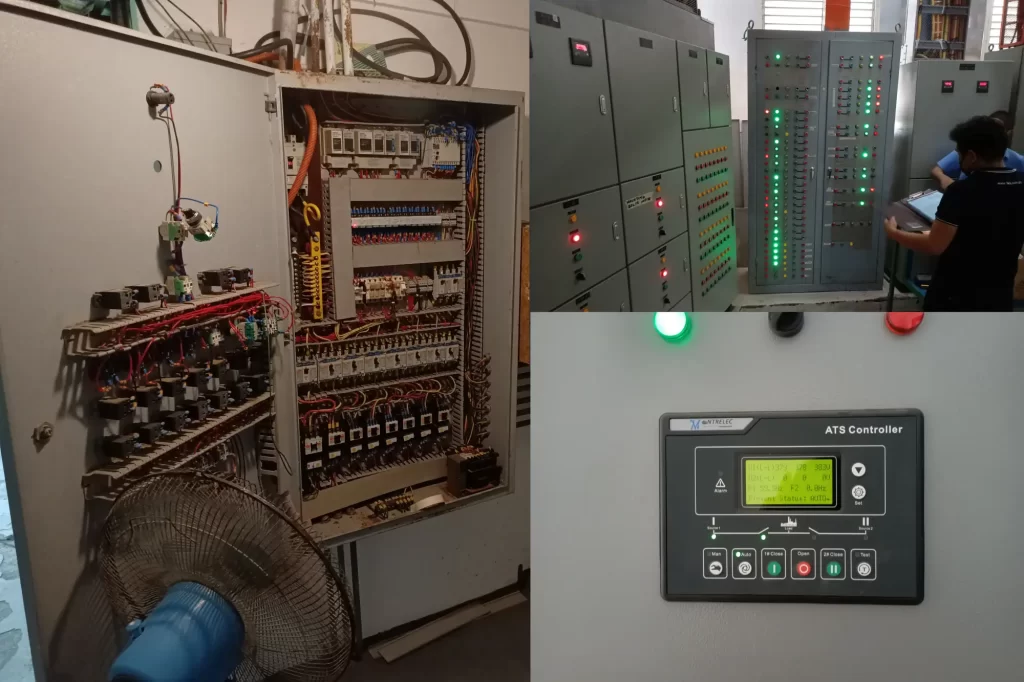Electrical Supply
Electrical Supply – The providing of electricity for all branches of the economy: industry, agriculture, transportation, municipal services, and so on.
A system for electric power supply includes power sources, step-up and step-down electric power substations, electric feeder and distribution systems, and various auxiliary devices and structures.
The major portion of the electricity generated is consumed by industry—approximately 70 percent in the USSR (1977). The organizational structure of electric power supply is determined by the special characteristics of electric power generation and distribution that have been established historically in various countries. Common principles govern the design of systems in all industrially developed countries.
Certain distinguishing features and local differences are due to the geographical size of a country, climatic conditions, the level of economic development, the volume of industrial production, and the distribution density of electrified installations and their power consumption.
Power sources. The principal sources of electricity are electric power plants and feeder systems of regional energy systems. District heat and power plants are used by industrial enterprises and cities to supply both electricity and heat; their capacity depends on the heat required for production purposes and heating. District heat and power plants with generators that produce current at voltages up to 20 kilovolts (kV) are constructed to supply large enterprises, such as metallurgical works, with a high heat consumption and a substantial secondary power output.
The power plants are usually sited outside the boundaries of the works at a distance of 1–2 km. They are of importance for the region because they supply heat and power not only to the enterprise but also to nearby industrial and residential areas. Some consumers of electricity can ease the burden on power sources during peak hours by allowing interruption or limitation of power consumption without significant ill effect on production processes.
Among such power consumers are the majority of electric furnaces, which retain well the heat already produced, and some electrolytic equipment. They make it possible to even out sharp load curves in energy systems.
The voltages of systems of electric power supply represent optimum values that have been tested in practice. In each situation the choice of voltage depends on the power being transmitted and the distance from the power source to the consumer.
The voltage ranges adopted in various countries do not differ fundamentally. The voltages used in the USSR (6,10, 20, 35,110, 220, 300 kilovolts, and so on) are typical of other countries as well. The voltage ranges of some countries have intermediate values that were introduced during an earlier stage in the development of the transmission and distribution systems and continue in use, although in many cases they are not optimum values.
The power supplied to large industrial enterprises, transportation, and municipal services is delivered at voltages of 110 and 220 kV (in the USA it is often 132 kV); for particularly large energy consumers 330 and 500 kV are used. In the primary distribution stages voltages of 110 or 220 kV are used. A voltage of 110 kV is used most frequently because it makes it easier to accommodate aerial transmission lines in built-up industrial and urban areas. It is expedient to distribute power among consumers at a voltage of 220 kV when such voltage matches the feed voltage. Under some conditions it is advantageous to have a mains voltage of 60–69 kV (it is used in many countries of Western Europe and in the USA).
A voltage of 35 kV is used for the feeder and distribution systems of medium-power industrial enterprises, in small and medium-size cities, and in rural electrical systems as well as for the supply of high-capacity power users in large enterprises—electric furnaces, rectifier equipment, and the like. A voltage of 20 kV is used relatively infrequently to extend systems that already carry this voltage; its use may also be advisable in areas having a low electric load density as well as in large cities and major enterprises served by a district heat and power plant with a generator voltage of 20 kV.
Voltages of 6 and 10 kV are used for electric power distribution (at various supply levels) in industrial enterprises, cities, and elsewhere. Such voltages are also suitable for supplying consumers of small amounts of power located near the power source. In most cases it is advisable to make 10 kV the primary voltage, in which case electric motors can be fed from 10/6 kV step-down substations directly from a transformer or from the 6-kV winding of a 110/220 kV transformer with split secondary windings (10 and 6 kV).
System layouts. Circuits for electric power supply are designed on the principle of bringing a high-voltage source of power as close as possible to the consumers with a minimum number of intermediate switching and transformer stages. This entails the use of high-level inputs (from 35 to 220 kV) of cable and aerial power transmission lines. The step-down substations are located centrally to major power consumers, that is, at electric load centers. As a result of such siting, electric power losses are reduced, less material is required, the number of intermediate system links is decreased, and operating conditions for power consumers are improved.
The elements of the supply system carry a constant load; they have reciprocal standby functions that take into account permissible overloads and a reasonable limit for the power consumption under postemergency conditions, when an element or portion of the system is recovering from a failure.
In most cases provision is made for separate functioning of all elements, based on the extensive use of automatic devices and high degree of links isolation. Parallel operation is only used in case of necessity.
High-level inputs may be trunk or radial lines (Figure 1), depending on environmental conditions, building development in the area, and other factors. The simplest input layout has cable radial lines running directly into a substation transformer; it is also the most compact and reliable plan. High-level inputs may also use compact, completely enclosed units—integrated bus structures filled with sulfur hexafluoride—carrying 110 kV.
Feel free to Contact Us. Learn more about Electrical Services and Supply. See our products and services.
Source: https://www.dow.com/en-us.html





